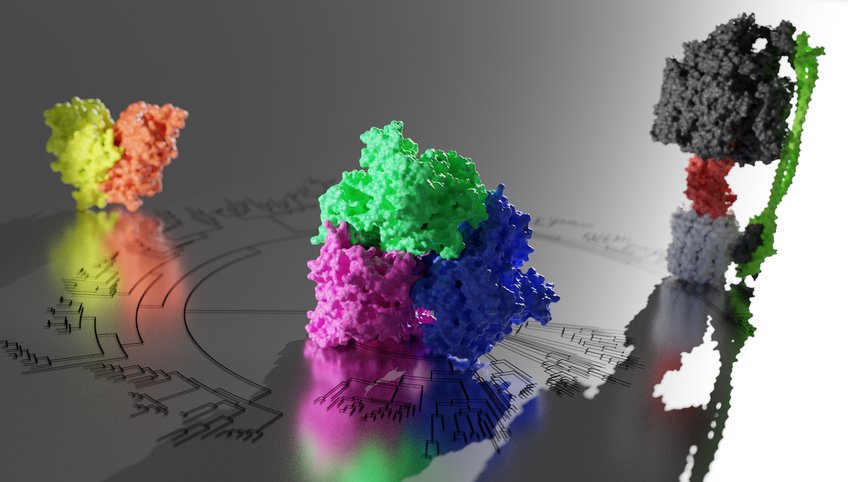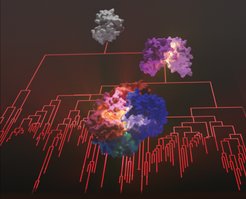
Evolutionary Biochemistry
Our lab studies the evolution of protein complexes at the interface between physical biochemistry and evolutionary biology. The majority of proteins associate into higher-order complexes. They range from the simple - containing only a few genetically identical subunits – to the baroquely elaborate – containing dozens of genetically different subunits in precise arrangements. How and why complexes evolve and change in evolutionary history is largely unknown, but directly relates to major questions in evolutionary biology: Does biological complexity arise through many incremental steps, or through rare but drastic jumps? And is it always driven by natural selection for some beneficial function, or does blind chance play a role in creating and maintaining this complexity? Our lab uses a combination of biophysical, phylogenetic and bioinformatics tools to answer these questions on the scale of individual complexes as well as entire families of proteins and their interactions. In particular, we use ancestral sequence reconstruction to resurrect ancient complexes that last existed hundreds of millions of years ago. By characterizing these ancient proteins biochemically we unravel the interplay of history, chance, and natural selection in producing the complexity that exists today.
Subtopics
Evolution of interface specificity
Protein complexes assemble with remarkable selectivity: Each protein associates with only a small subset of all the potential and in many cases very similar interaction partners it encounters in the crowded molecular environment of the cell. To understand how and why this selectivity evolves, we are tracing the historical evolution of protein interactions across entire families of proteins. We are interested in interactions among all members of one family, as well as interactions between on member of a family and the rest of the proteome. We are particularly interested in the roles of positive selection and blind chance in shaping how these interactions change over time.
Evolution of new interfaces

How easily do new protein-protein interactions evolve – are they created by rare mutations that are subsequently preserved by selection? Or are complexes so common because they are mutationally very accessible? We now know that individual complexes, like hemoglobin evolved through a small number of mutational steps from smaller precursors. But are such trajectories common and accessible to proteins at most times? To answer these questions we are developing high-throughput methods to measure the assembly state of thousands of protein variants. Such a deep mutational scans will map how close to assembly proteins are in the mutational space surrounding their sequence, and whether certain types of assembly are easier to evolve than others. Our model systems for these questions at the moment are oligomeric enzymes, like citrate synthase and Rubisco.
Complexity ratchets and reversibility of evolutionary transitions
According to classical evolutionary theory, useless structures should quickly be lost to the constant onslaught of random, destructive mutations. Protein complexes may not follow this pattern: Their interfaces can become entrenched over time, making the protein reliant on assembly even if the interface does not directly contribute to function. This results in a complexity ratchet: the evolution of a new interface is not easily reversible, because mutations that destroy the interface also diminish function. We study the mechanisms that produce such ratchets, their long-term evolutionary consequences, and how sometimes evolution overcomes such ratchets and reverts to simpler forms of assembly. We currently study the evolution of such ratchets in flagella
